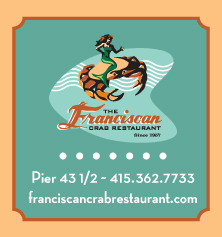Randall museum gets a ‘Windswept’ facelift
February 2012

The San Francisco Arts Commission and the Randall Museum have unveiled the installation of Windswept, a wind-driven kinetic façade by Charles Sowers, an artist and exhibit developer at the Exploratorium. Consisting of over 500 freely rotating directional arrows, Windswept transforms a blank wall into a large-scale observational instrument that reveals the complex interactions between the wind and the environment. The artwork was funded by the Art Enrichment monies generated by the San Francisco Public Utilities Commission’s capital projects. A public dedication ceremony will be held on Saturday, February 4 at 10 a.m. with an artist talk to follow at 10:30 a.m. in the museum’s theater.
“Windswept uses the power of the wind to create a kinetic sculpture that is engaging, fun and beautiful. Children and adults alike will enjoy this mesmerizing artwork, and perhaps be inspired to think about the wind as a potential energy source,” said public art program director Susan Pontious.
Wind gusts, rippling and swirling through the sculpture, will illustrate the myriad and ever-changing ways the wind interacts with the building. Inspired by the maritime wind direction indicators found on sailboats, the arrows, which are mounted parallel to the façade in a grid, serve as discrete data points that provide a sample of the wind at its point of contact with the museum. The arrows indicate the direction of the distinct airflows that comprise the larger wind phenomenon.
According to the artist, “I’m generally interested in creating instrumentation that allows us insight into normally invisible or unnoticed phenomena. The Randall site, like many in San Francisco, is characterized to a great extent by its relationship to the wind.”
“Charles Sowers’s new kinetic art piece will engage our visitors as soon as they arrive at our site. Like a giant school of glittering fish, the little wind vanes will dart and turn in unison, making invisible wind currents into an ever-changing graphic display of a force of nature,” said Randall Museum executive director Chris Boettcher.
Sowers has been an exhibit developer at the Exploratorium since 1998. His work presents actual physical phenomena – often of striking visual beauty – that draw people into careful interaction. He seeks to provoke a sense of delight and wonder and reward extended observation. Frequently this involves developing an apparatus to recreate or highlight some natural phenomenon observed in the world – the swirl of fog blowing over a hill, the formation of ice on a puddle, or the flow of water and foam on the beach as a wave drains away. Science (especially the field of nonequilibrium pattern formation) serves as a deep resource for creative ideas and Sowers frequently collaborates with scientists to recreate lab experiments. Windswept is Sowers’s third public art commission. In April 2011 he completed Butterfly Wall, a kinetic sculpture at the San Francisco International Airport’s new Terminal 2, which was commissioned by the San Francisco Arts Commission.
Public Meeting for Randall Museum Feb. 27
Randall Museum Friends is a nonprofit organization established in 1954 to advocate on behalf of the museum and to raise additional funds to support the museum’s operations, programming and facilities. As part of its agreement with the city of San Francisco, Randall Museum Friends will hold a public meeting at 6 p.m. on Monday, Feb. 27 to review the past year, announce plans for the coming year, answer questions, and get feedback.
The meeting will be held in Randall Museum’s Terrace Room. For more information, call 415-554-9681 or e-mail [email protected].
The Randall Museum, a facility of the San Francisco Recreation and Park Department, offers youth and adults opportunities for active involvement and recreation in an integrated program of arts and sciences. Focusing on the cultures and environment of the San Francisco Bay Area, the museum strives to inspire creativity, curiosity, and appreciation of the world around us. The museum houses changing science, art and interactive exhibits. Permanent areas of the museum include a live animal exhibit, an ocean ecology exhibit, a railroad exhibit, a woodshop, art and ceramics studios, a toddler playroom, a 188-seat theater, and outdoor gardens. Find out more at www.randallmuseum.org.


